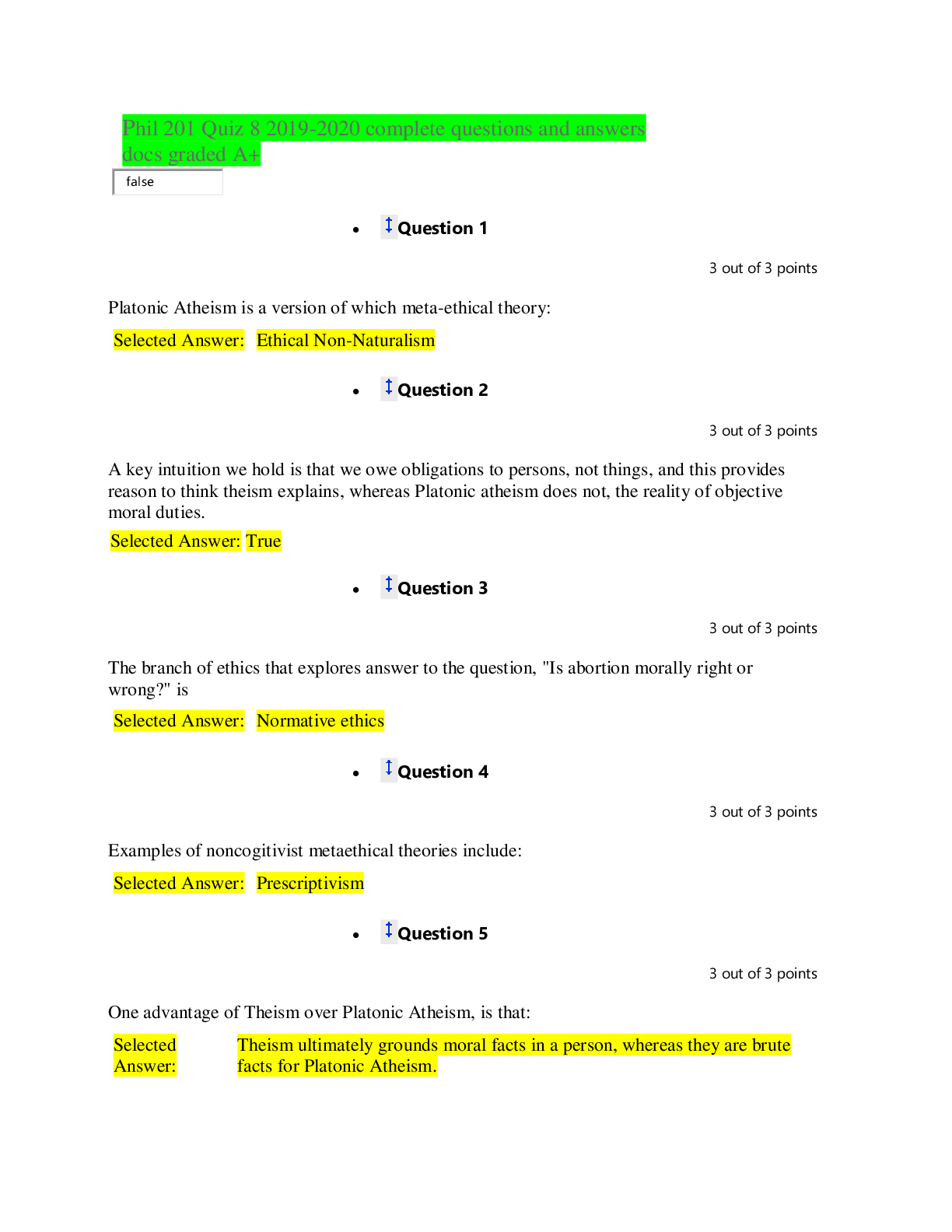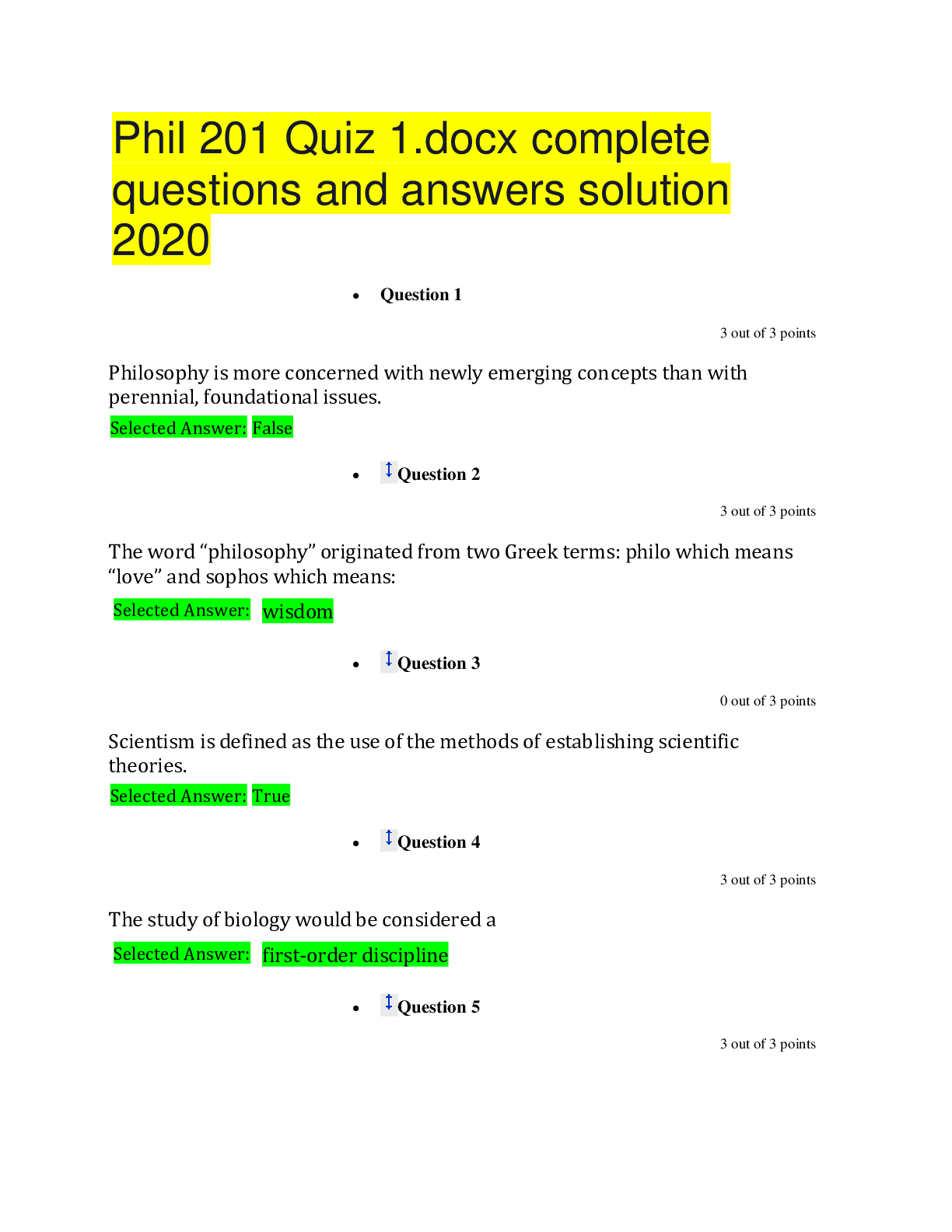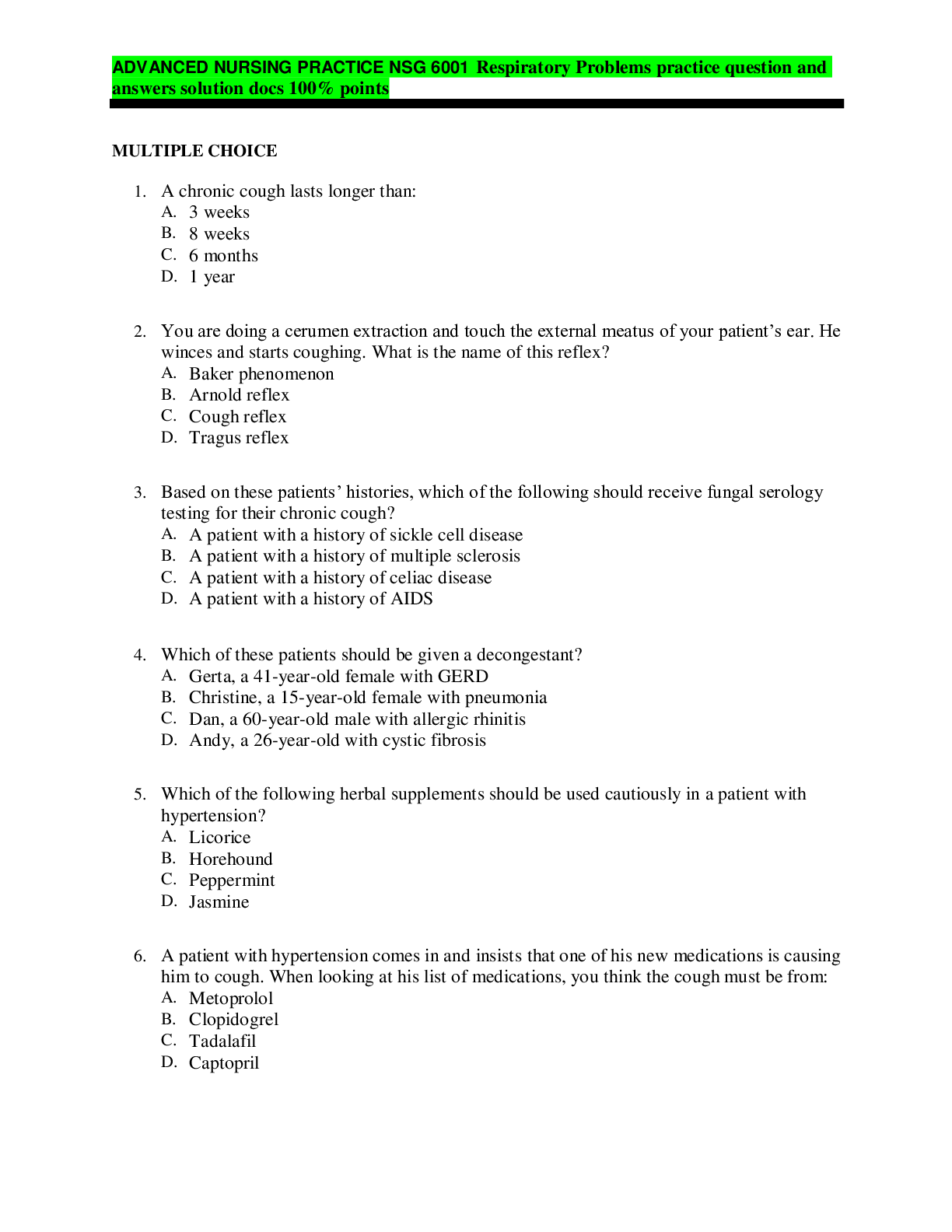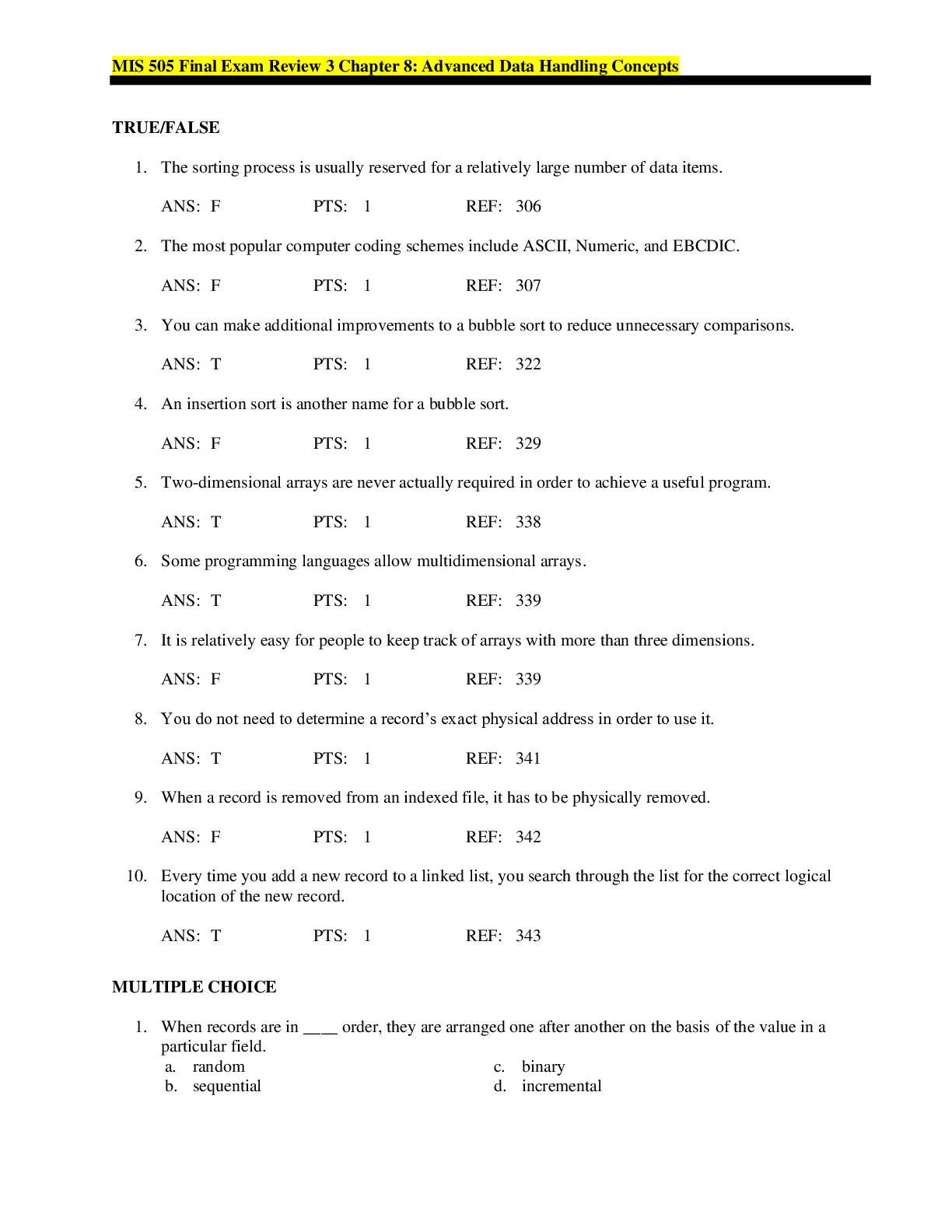Psychology > QUESTIONS & ANSWERS > Psyc 2314 Exam II Pool perfect material to use during the exam seasons 2020 complete questions and a (All)
Psyc 2314 Exam II Pool perfect material to use during the exam seasons 2020 complete questions and answers Rasmussen collage
Document Content and Description Below
Psyc 2314 Exam II Pool perfect material to use during the exam seasons 2020 complete questions and answers Chapters 5-10 1. Brain weight triples in size during the first two years of life prima... rily because of the growth of _____. A) axons B) dendrites C) neurons D) synapses 2. A typical child at 24 months weighs about _____ pounds. A) 19 B) 28 C) 41 D) 52 3. Behaviors that involve small body movements are known as _____ motor skills. A) gross B) fine C) mature D) micro 4. Fine motor skills are those that _____. A) develop as a result of brain damage B) require practice C) require small body movements D) use three or more muscles 5. Fine motor skills are _____. A) head motions B) small movements C) large movements D) feet motions 6. The signs of REM sleep include flickering of the infant's _____. A) open eyes and rapid brain waves B) closed eyes and rapid brain waves C) open eyes and slow, steady brain waves D) closed eyes and slow, steady brain waves Clara's weight is in the 30th percentile. This means that _____ percent of all babies her age weigh less than she does and _____ percent of all babies her age weigh more than she does. A) 30; 70 B) 20; 80 C) 70; 30 D) 80; 20 8. Newborns perceive important experiences like breastfeeding _____. A) with dynamic sensory-motor systems B) primarily through fine motor skills C) primarily through the sense of smell D) with practice 9. Which statement describes the brain's cortex? A) It is found in the center of the brain and is responsible for primitive emotions and reflexes. B) It makes up a small percentage of the outer brain and is responsible for movement. C) It makes up the outer layers of the brain and is responsible for thinking, feeling, and sensing. D) It is the gray matter of the brain where the intersections of dendrites and axons form. 10. According to research, increased brainpower is most likely due to _____. A) transient exuberance B) synaptic regeneration C) axon pruning D) dendrite pruning 11. The sense that is the least functional at birth is an infant's _____. A) hearing B) taste C) vision D) smell 12. The area in the brain that plans, anticipates, and controls impulses is the _____ cortex. A) prefrontal B) parietal C) temporal D) striate 13. Lyrissa lives in Africa. She is 9 months old and does not weigh enough due to malnutrition. Her tissues are wasting away. Lyrissa suffers from _____. A) rickets B) hypoglycemia C) kwashiorkor D) marasmus 14. The brain develops extremely quickly in the first few years, but not all of this growth is permanent. Due to its rapidity and temporary nature, this rapid brain growth is called _____. A) dendrite proliferation B) pruning C) cortex multiplication D) transient exuberance 15. The average baby will grow _____ inches in his or her first year. A) 10 B) 14 C) 16 D) 20 16. The dozing, half-awake state often seen in newborns is called _____. A) REM sleep B) paradoxical sleep C) transitional sleep D) postnatal sleep 17. When the immune system is primed to resist a particular disease, the process is called _____. A) exuberance B) immunization C) pertussis D) head-sparing 18. Universal grammar is Chomsky's term for his observation that _____. A) all young children master basic grammar according to a schedule B) all grammar rules are the same across all languages C) some rules of grammar are present in all languages D) all parents reinforce correct use of grammar 19. Eric just started saying two-word sentences such as “Dada home” and “Doggie go.” About how old is Eric likely to be? A) 10 months B) 12 months C) 16 months D) 21 months 20. Abed is an average toddler. His parents can expect him to utter his first multiword sentence around _____. A) 12 months B) 16 months C) 21 months D) 27 months 21. In which of Piaget's sensorimotor stages do infants adapt, anticipate, and become more deliberate in responding to people and objects? A) stage one B) stage two C) stage three D) stage four 22. According to Piaget, a stage-five sensorimotor baby is like a _____. A) child in the “terrible twos” B) neurotic person who cannot take no for an answer C) mime who imitates behavior of all kinds D) scientist who experiments to see what will happen 23. Information-processing theory asserts that development _____, and Piaget's theory asserts that development _____. A) occurs in stages; occurs in stages B) occurs in stages; occurs daily C) occurs daily; occurs in stages D) occurs daily; occurs daily 24. Research on infant long-term memory has shown that infants can remember if the researchers _____. A) use situations that are different from real life B) do not let the baby move during the memory event C) use highly emotional events D) use special measures to aid memory retrieval, such as reminders 25. A visual cliff is used to assess infants' _____. A) visual acuity B) perception of depth C) kinesthetic awareness D) ability to crawl 26. Mary hides Ramy's favorite toy under a blanket while Ramy watches. Ramy removes the blanket and squeals when he sees the toy. Mary again hides the toy, but this time under a different blanket. Even though Ramy saw where Mary hid his toy, he still looks under the first blanket before removing the second blanket and retrieving the toy. Ramy has displayed _____. A) lack of centration B) lack of object permanence C) habituation D) the A-not-B error 27. Piaget believed children begin to develop cognitively at _____. A) birth B) 3 months C) 1 year D) 18 months 28. An example of stage-three sensorimotor behavior is _____. A) thumb-sucking and self-soothing B) looking for a smile and smiling back C) searching for a teddy bear hidden under a blanket D) trying to dress like Mommy or Daddy 29. When does it first become obvious that a person has discerned the rules of his or her native language? A) when the person learns a second language B) when the person is able to read and write C) when the person starts using two-word sentences D) once the person's sentences contain a subject, verb, and object 30. Stage _____ of sensorimotor development is characterized by trying to continue an experience, whereas stage _____ is characterized by initiating and anticipating events. A) one; two B) two; three C) three; four D) four; five 31. As infants acquire language, they say more _____ than any other parts of speech. A) nouns B) verbs C) pronouns D) adjectives 32. Which theorist said that children learn language as a result of reinforcements given by parents and caregivers? A) Vygotsky B) Chomsky C) Skinner D) Erikson 33. Which of the following is the best explanation for déjà vu experiences? A) There is a metaphysical continuum, through which one is viewing his or her own past directly. An implicit memory of a similar situation from infancy is evoking a spooky feeling of familiarity. C) There was a precognitive dream that predicted the experience. D) They are a view into one's past life. 34. When 1-week-old Justine feels too warm, she reflexively cries. According to Piaget, Justine is in stage _____ of the sensorimotor period. A) one B) two C) three D) four 35. Jimmy's dad comes home from grocery shopping, sees Jimmy sitting on the sofa, and says, “Where's that boy of mine?” Jimmy gives his dad a smile that spreads across his entire face, and his dad responds with an exaggerated surprised look. This is an example of _____. A) psychosocialization B) symbiosis C) polarization D) synchrony 36. Annalise is an adult who requires predictability and regularity in all aspects of her life. She eats the same breakfast every day, organizes her clothes by color in her closet, and gets distressed when the milk is put on the wrong shelf in the refrigerator. Annalise appears to be fixated at the _____ stage. A) sensorimotor B) oral C) anal D) phallic 37. Which hormone is associated with encouraging caregiving behaviors? A) cortisol B) androgens C) glucose D) oxytocin 38. Four-month-old Tammi and 13-month-old Dawn are left with a babysitter. How will they react? A) Tammi will be more upset than Dawn. B) Dawn will probably show more distress than Tammi. C) Both Tammi and Dawn will be experiencing separation anxiety. D) Neither girl is likely to show distress. 39. The Western value of independence is clearly exhibited in _____. A) Erikson's stage of autonomy versus shame and doubt B) Freud's oral stage C) Piaget's sensorimotor stage D) epigenetic theory 40. A parent and a toddler meet someone who makes the parent nervous. The toddler will probably _____. A) act anxious B) smile and reach for the person C) start crying and hit the person D) not show any reaction 41. Geoffrey enjoys spending time with his 1-year-old son. Compared to his wife, Geoffrey's interaction with their son is likely to be _____. A) more actively playful B) less noisy and boisterous C) more involved with basic care D) less active and energetic 42. The new emotions that appear toward the end of a child's second year are _____. A) joy, distress, fear, and anger B) pride, shame, embarrassment, and guilt C) joy, fear, shame, and guilt D) pride, shame, joy, and anger 43. Which boy is MOST likely to be strongly affected by his mother's responsiveness? A) Kim, who is anxious and difficult B) Jerry, who is easygoing C) Trenton, who is a hard-to-classify child D) Ko, who is a slow-to-warm-up child 44. When playing with their children, fathers are more likely than mothers to _____. A) read stories B) engage in physical play C) show them how to play with their toys D) give them food rewards 45. In Erikson's theory, the infant's earliest task is described as that of _____. A) obtaining oral gratification B) controlling bodily functions. C) learning pain and pleasure D) learning trust or mistrust 46. According to the New York Longitudinal Study, by approximately 3 months of age infants exhibit a wide enough variety of behaviors that they can be classified as one of _____ temperamental categories. A) three B) four C) seven D) nine 47. In the United States, about 20 percent of infants are cared for _____ throughout their first year of life. A) exclusively by their mothers B) by a grandparent C) by professionals at a day care center D) by a professional in a family day care 48. Freud claimed that during the anal stage _____. A) infants often find urinating and defecating to be painful B) toilet training leads to positive mother–child interactions C) infants find pleasure in stimulating and controlling the bowels D) infants strive to develop a sense of trust in the parents 49. Abed is 12 months old, and his uncle Frank is visiting for the first time in 6 months. Frank is delighted to see his nephew, so as he enters the room, he booms, “There's my little man!” Abed looks to his mother, who is smiling broadly at her brother Frank, and crawls to her to be picked up. Abed is demonstrating _____. A) attachment disorder B) social referencing C) social phobia D) insecure attachment 50. Josh is 15 months old. His parents are happy in their marriage and financially stable. Most likely, Josh's attachment type will be _____. A) insecure-resistant/ambivalent B) insecure-avoidant C) disorganized D) secure 51. The Strange Situation measures how a child _____. A) responds to a stranger B) plays with a parent C) responds to separations and reunions with a caregiver D) plays with toys he or she has never seen before 52. Between the ages of 2 and 6, a well-nourished child will gain about _____ pounds and grow about _____ inches per year. A) 5; 6 B) 2; 3 C) 4.5; D) 5.5; 4.5 53. At what age does any specific disease overtake accidents as a cause for human mortality? A) 20 B) 40 C) 50 D) 60 54. Kirsten, a 4-year-old, is playing with her building blocks. Her mother announces that they have to leave to pick up Kirsten's sister. Kirsten launches into a tantrum. What is the best explanation for Kirsten's reaction? A) Kirsten is perseverating on the building blocks. B) Kirsten is spoiled. C) Kirsten's mother should have given a warning. D) Four-year-olds throw many tantrums. 55. The average 6-year-old child from a developed nation weighs _____ pounds. A) 20 to 30 B) 30 to 40 C) 40 to 50 D) 50 to 60 56. Nathan is Canadian, and he weighs 55 pounds. About how many years old is he likely to be? A) 2 B) 4 C) 6 D) 8 57. About 10 percent of adults in Great Britain and the United States are _____. A) left-handed B) right-handed C) left hemisphere dominant D) right hemisphere dominant 58. Myelination is important because it _____. A) connects the two halves of the brain B) compensates for loss of brain function due to injury C) promotes regular childhood sleep patterns D) speeds up the transmission of neural impulses 59. Why are children drawn toward eating lead-based paint chips? A) The children are hungry. B) The paint chips taste sweet. C) Children like paint chips of all types. D) Children often have a lead deficiency. 60. The long band of nerve fibers that connects the brain's hemispheres is _____. A) myelination B) the corpus callosum C) the prefrontal cortex D) the axon cord 61. Writing your name is a _____, whereas kicking a ball is a(n) _____. A) sensorimotor skill; preoperational skill B) physical skill; cognitive skill C) coordination skill; inter-coordination skill D) fine motor skill; gross motor skill 62. An example of a gross motor skill is _____. A) painting a picture B) dialing a phone C) picking up a bug D) hopping on one foot 63. How do abused children come to view other people? A) as kind and nurturing, in contrast to their abuser's behavior B) as hostile and ready to take advantage of them C) as uninteresting and difficult to understand D) as amusing and appealing 64. Austin's parents neglected him, and the court determined that he needed to be removed from their care while his parents dealt with the issues that led to his neglect. He was placed with his aunt, who provided _____. A) foster care B) kinship care C) day care D) adoptive care 65. An activity that requires fine motor skills is _____. A) buttoning a coat B) kicking a ball C) climbing a tree D) playing tag 66. An example of a fine motor skill is _____. A) using scissors to cut paper B) swimming across a pool C) roller-skating around the block D) playing catch with a football 67. Fine motor skills depend heavily on the maturation of the _____. A) corpus callosum B) amygdala C) hippocampus D) hypothalamus 68. The area of the brain that is crucial in expressing and regulating emotions is the _____. A) limbic system B) prefrontal cortex C) fusiform face area D) corpus callosum 69. At what age do MOST children without older siblings develop theory of mind? A) 1 year B) 2 years C) 3 years D) 4 years 70. Skills that the child can accomplish with assistance but can't yet perform independently are part of _____. A) private speech B) the gap between heredity and learning C) distal development D) the zone of proximal development 71. When Jennie sees her third-grade teacher in the grocery store, she is shocked to see her outside of school. This is likely due to Jennie's _____. A) static reasoning B) abstract reasoning C) concrete thinking D) irreversibility 72. The goal of most teacher-directed preschools is _____. A) promoting individual achievement B) encouraging informal social interaction C) shaping student behavior D) teaching children to read by the end of the year 73. When Renee was 11 months old, she was injured in a car crash. She was in a coma for almost a year and then spent many months of recovery from a brain injury. By her third birthday, although she is making good process, she has not yet spoken, and her parents are fearful that she will never speak. The doctors, however, feel confident that Renee will learn to speak. This is because language learning in the first four years is NOT a _____. A) sensitive period B) critical period C) developmental task D) dynamic system 74. Researchers now believe that Piaget _____ cognition in infancy and _____ cognition in early childhood. A) overestimated; overestimated B) underestimated; underestimated C) overestimated; underestimated D) underestimated; overestimated 75. A child who is unable to read a picture book independently gets help from an adult to accomplish the task. This assistance will only be effective if the _____. A) assistance is offered in a warm and gentle manner B) child is at least 6 years old C) child is in the period of preoperations D) skill is within the child's zone of proximal development 76. Which is an example of scaffolding? A) David helps his son build a model airplane by assembling it while his son watches. B) Howard and Priscilla buy a Wii game system for their 5-year-old daughter Rebecca. They set it up for her and then allow her to figure out how to turn it on and use it. C) Richard buys a do-it-yourself kite kit for his 6-year-old daughter Angela. He lays all of the pieces out for her and then allows her to read the instructions and follow them herself. D) Miriam helps her son Ben to make cookies. She measures all of the ingredients out and places them on the counter in small bowls. She reads the recipe aloud as Ben places the ingredients in the bowl and mixes them together with a spoon. 77. According to Vygotsky, within the context of cognition, language is a tool _____. A) to make oneself understood B) to regulate behavior C) to advance thought D) of self-expression 78. Which 4-year-old boy is likely to have the most advanced theory of mind? A) Dewei, who is Chinese B) Carter, who is Canadian C) Faakhir, who is Indian D) Jacob, who is from the United States 79. Ivan was playing under the kitchen table when he stood up suddenly and bumped his head. He pointed at the table and sternly said, “Naughty table!” This is an example of _____. A) egocentrism B) operational thinking C) centration D) animism 80. Preoperational thinking is all of the following EXCEPT _____. A) magical B) symbolic C) logical D) pretending 81. “I catched two mouses in a trap” is an example of _____. A) egocentric speech B) overregularization C) literal translation D) past imperfect tense 82. A few days ago, Hester's parents disciplined her because she refused to eat her green beans. Today when her parents announced that they were going to get a divorce, Hester cried, “Is it because I was bad? I'll be good!” Hester's conclusion that her failure to eat her green beans is the reason her parents are getting divorced displays Hester's _____. A) deductive reasoning B) conservation C) scaffolding D) theory-theory 83. After her haircut was complete, Tania began crying inconsolably. “You turned me into a boy!” she cried. Which obstacle to logic was Tania demonstrating? A) egocentrism B) static thinking C) focus on appearance D) symbolic thinking 84. In 2011 in the United States, 22 percent of children spoke English at school and _____ at home. A) English B) another language C) Spanish D) Chinese 85. As a father, Aahil rates low on nurturance and communication and high on maturity demands. He exhibits the _____ style of parenting. A) authoritarian B) permissive C) authoritative D) neglecting 86. In a study conducted by Zahn-Waxler, et al., 5-year-old girls acted out a disagreement between two female dolls. The researchers discovered that girls who _____ were more apt to be disruptive at age 9 than other girls. A) quickly engaged in apologetic behavior B) did not quickly engage in apologetic behavior C) made the dolls hit and kick each other D) had the dolls stop speaking to each other 87. Children with a parent who does not have an optimal balance between emotional expression and emotional control may be likely to _____. A) struggle with emotional regulation B) develop a sense of shame C) experience high levels of pride D) imitate their parent's mental illness 88. Which is NOT one of the types of play identified by Mildred Parten? A) personal play B) associative play C) onlooker play D) parallel play 89. In 1973, Lepper and colleagues conducted an experiment in which children did drawings. Some of the children were promised a reward while others received a surprise reward. The researchers found that the children who received the expected reward for drawing _____. A) had higher levels of self-esteem B) became adults who were artists C) demonstrated better emotional regulation D) were unlikely to draw independently at a later time 90. To understand a child's development of gender attitudes and roles, behaviorists stress _____. A) biological mechanisms B) reinforcement and punishment C) reasoning ability D) unconscious motivations 91. According to Freud's psychoanalytic theory, the Electra complex causes girls to _____. A) resent their father because he has a penis B) adore their father and resent their mother C) prefer their mother to their father D) try to make peace when parents fight 92. A) an internalizing problem B) an externalizing problem C) modulated emotional expression D) frustration management 93. Children who have peers to actively play with tend to _____. A) fight with them B) develop physical skills C) get overwhelmed D) tattle on their playmates 94. Because emotional regulation requires practice, maturation, and work, it is referred to as _____. A) effortful processing B) labor intensive C) effortful control D) demanding control 95. When parents expect unquestioning obedience from their children, their parenting style is labeled _____. A) tyrannical B) authoritative C) dictatorial D) authoritarian 96. Which scenario best demonstrates the behaviorist theory regarding gender development? A) Modair has some hostility toward his father. B) Stelvio is a 6-year-old girl who is trying to act like her father. C) Mack realizes that he is male and that he will always be male. D) Christine wears a dress, and her parents tell her how pretty she looks. 97. Children whose parents use psychological control as a means of discipline are more likely to _____. A) be physical bullies B) have healthy self-esteem C) be relationally aggressive D) get sick often 98. Developmentalists who believe that children are genetically programmed to defend and protect their parents subscribe to the belief that moral development predominantly comes from _____. A) nature B) nurture C) brain maturation D) trust during infancy 99. Developmentalists who believe that children are born amoral and learn to adopt their community's rules of morality subscribe to the belief that moral development predominantly comes from _____. A) nature B) nurture C) brain maturation D) trust during infancy 100. Just as monkeys do in their rough-and-tumble play, human children _____. A) look angry B) use a play face C) play hide and seek D) determine a social hierarchy [Show More]
Last updated: 1 year ago
Preview 1 out of 20 pages
Instant download
 answers (1).png)
Buy this document to get the full access instantly
Instant Download Access after purchase
Add to cartInstant download
Reviews( 0 )
Document information
Connected school, study & course
About the document
Uploaded On
Dec 23, 2020
Number of pages
20
Written in
Additional information
This document has been written for:
Uploaded
Dec 23, 2020
Downloads
0
Views
53




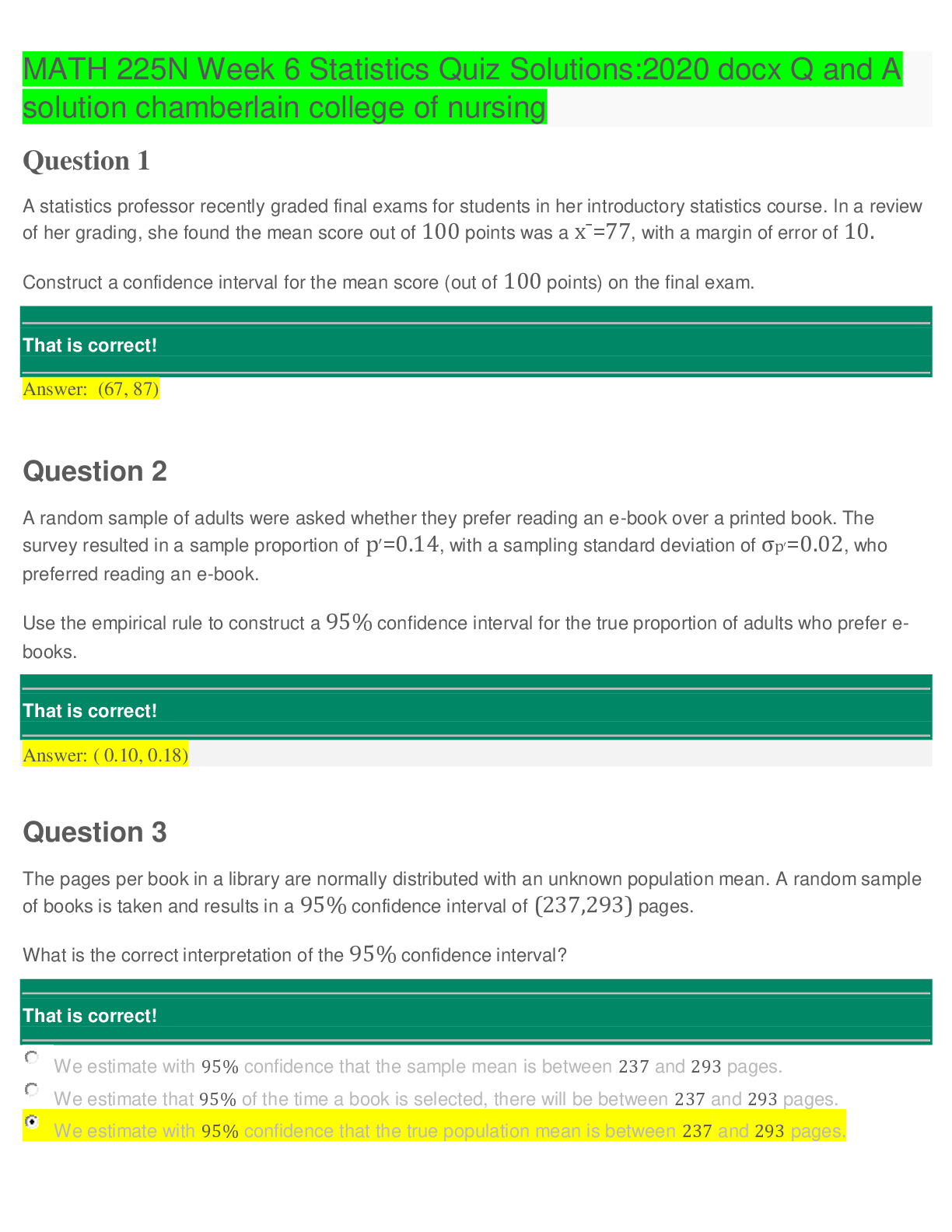

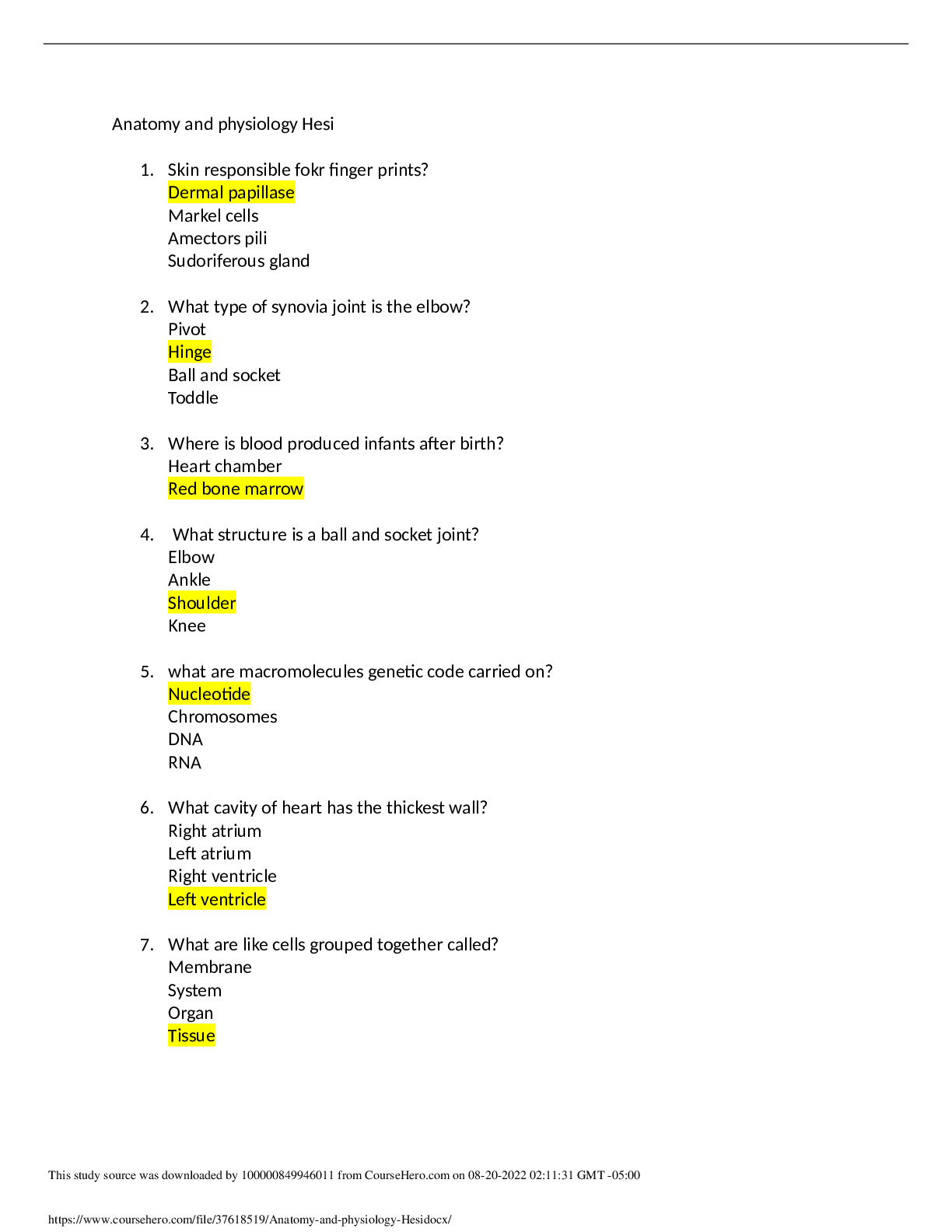
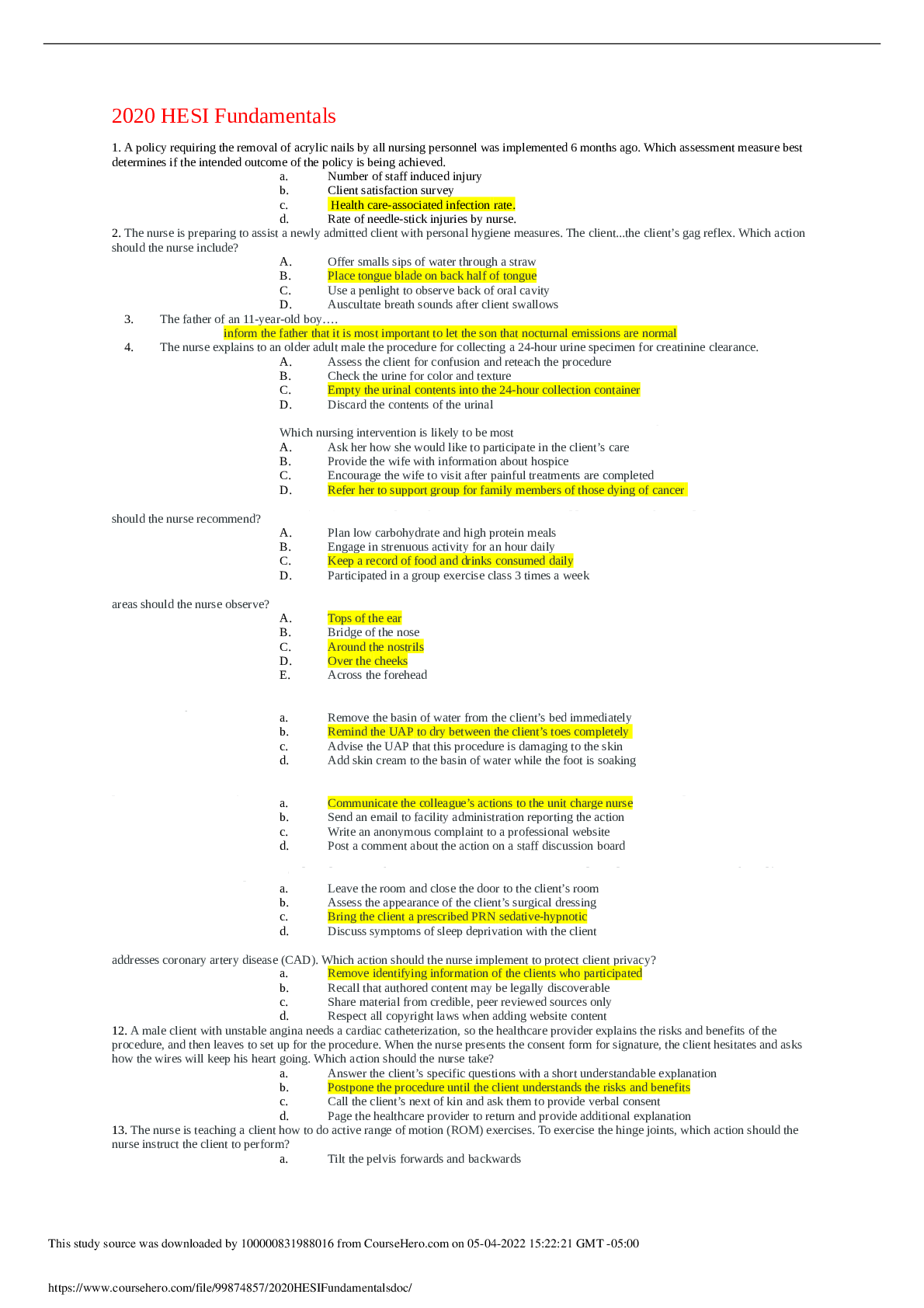

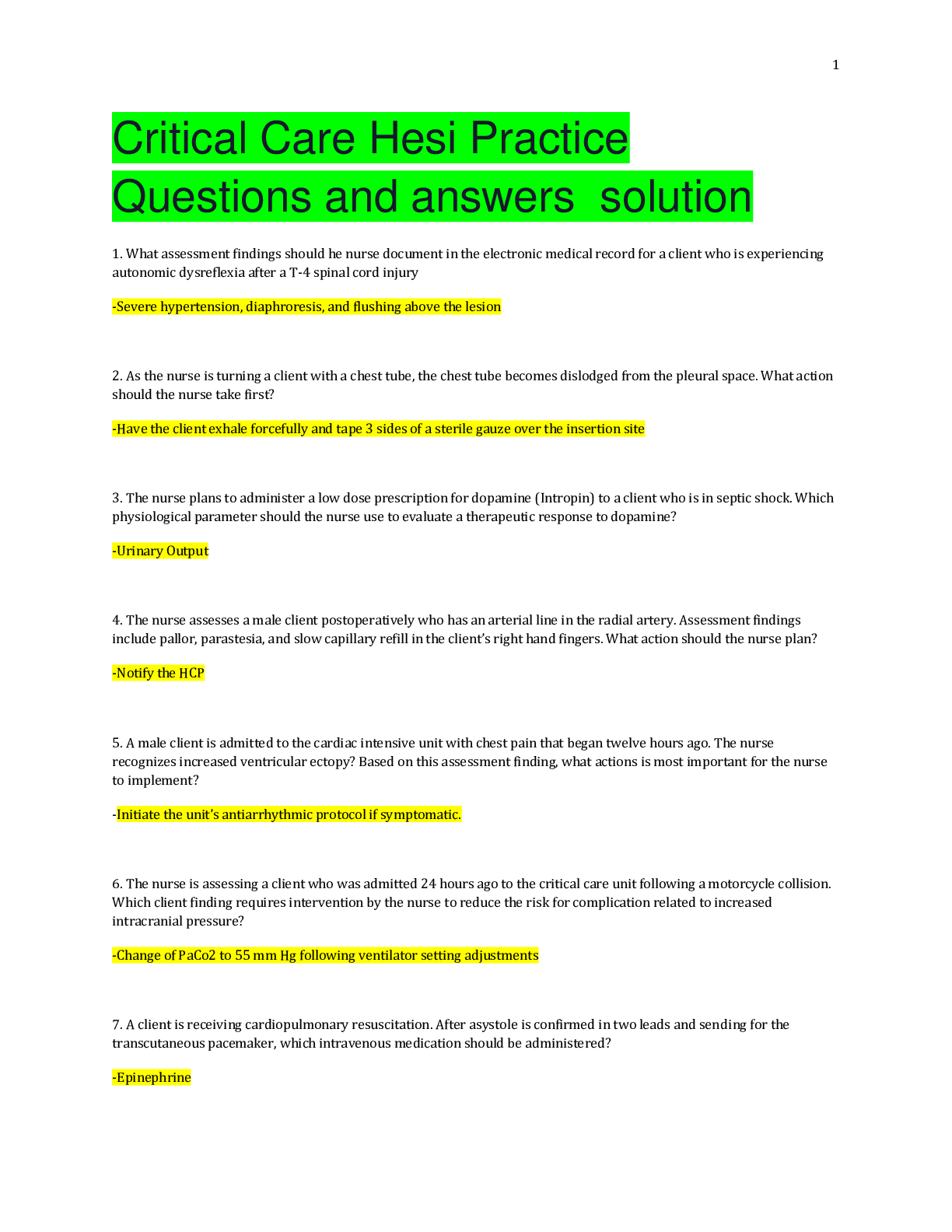
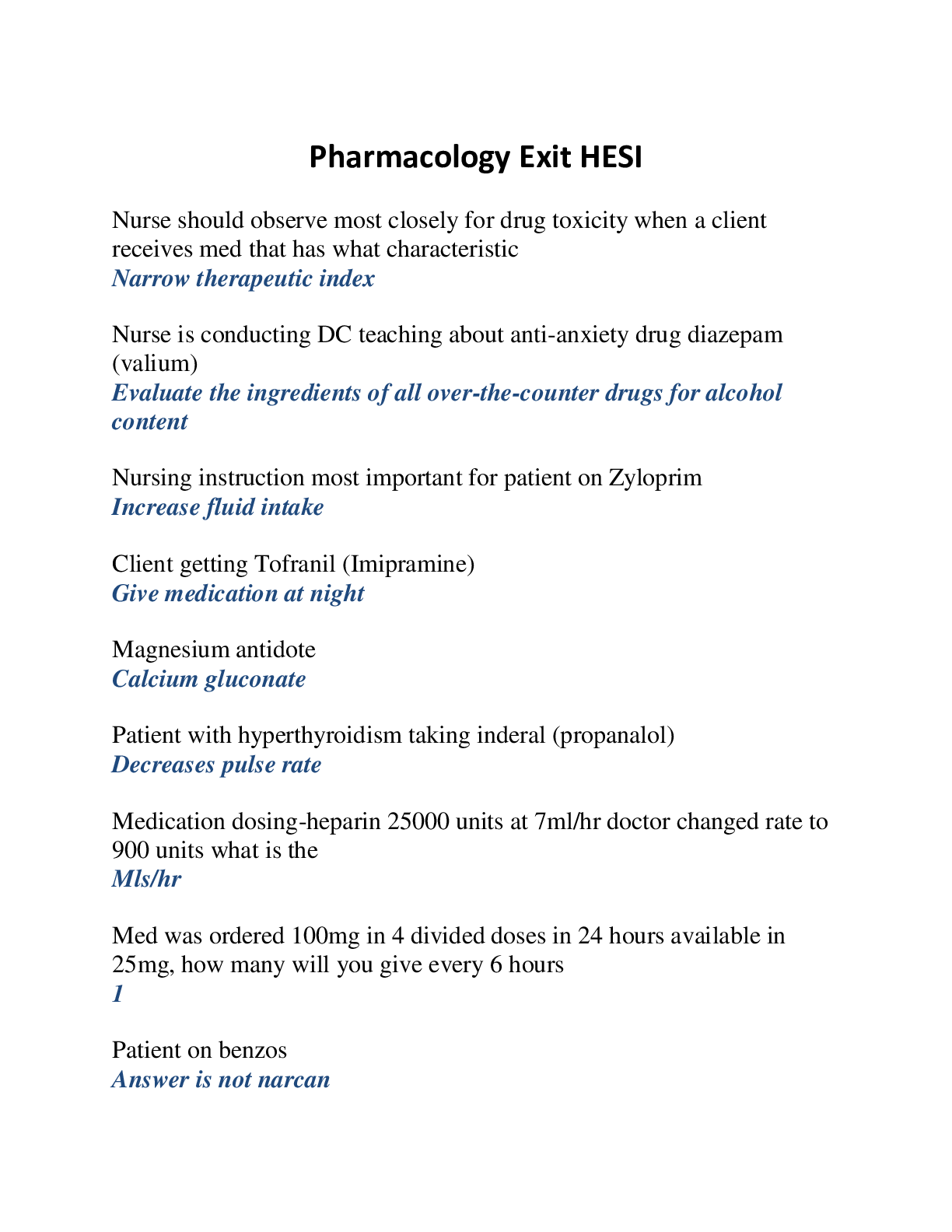
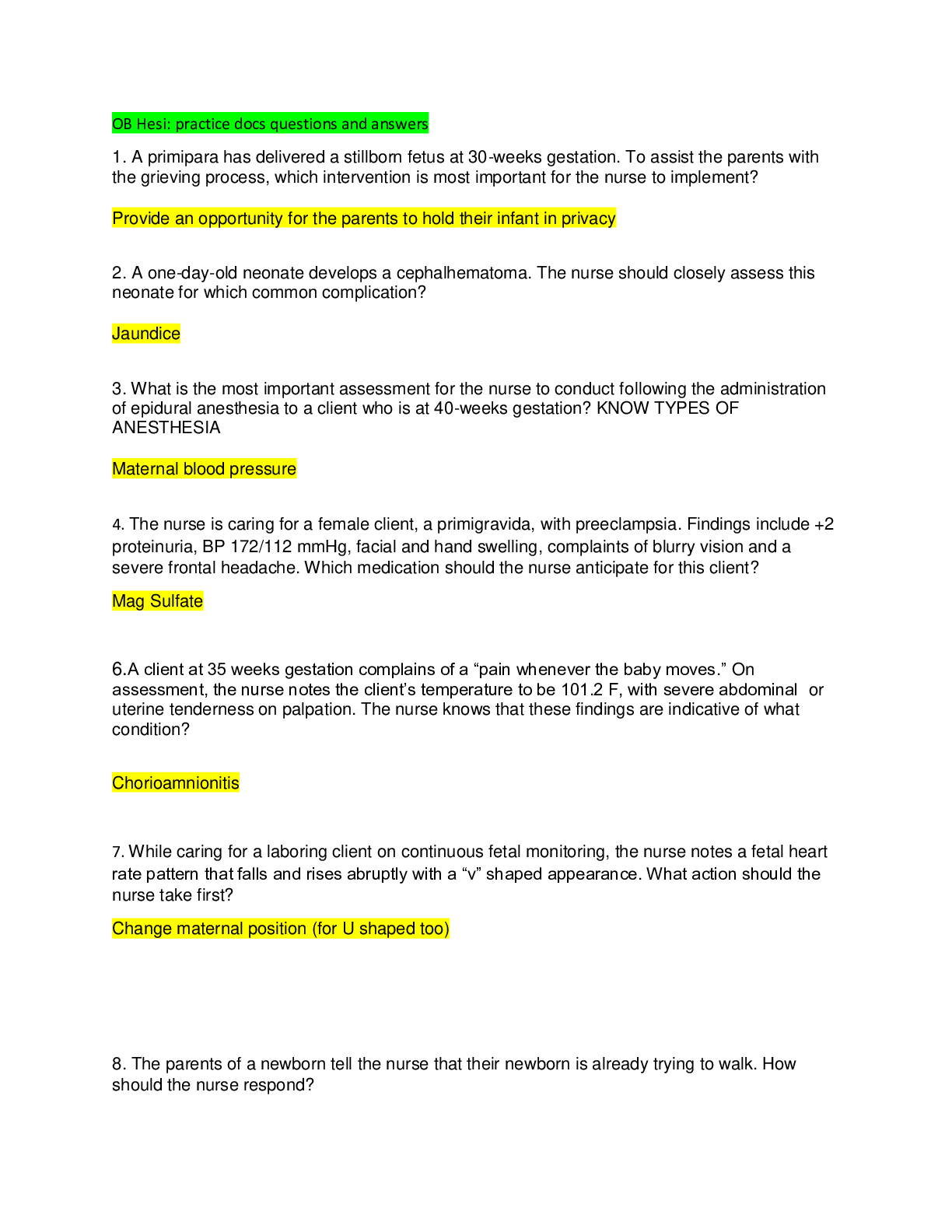

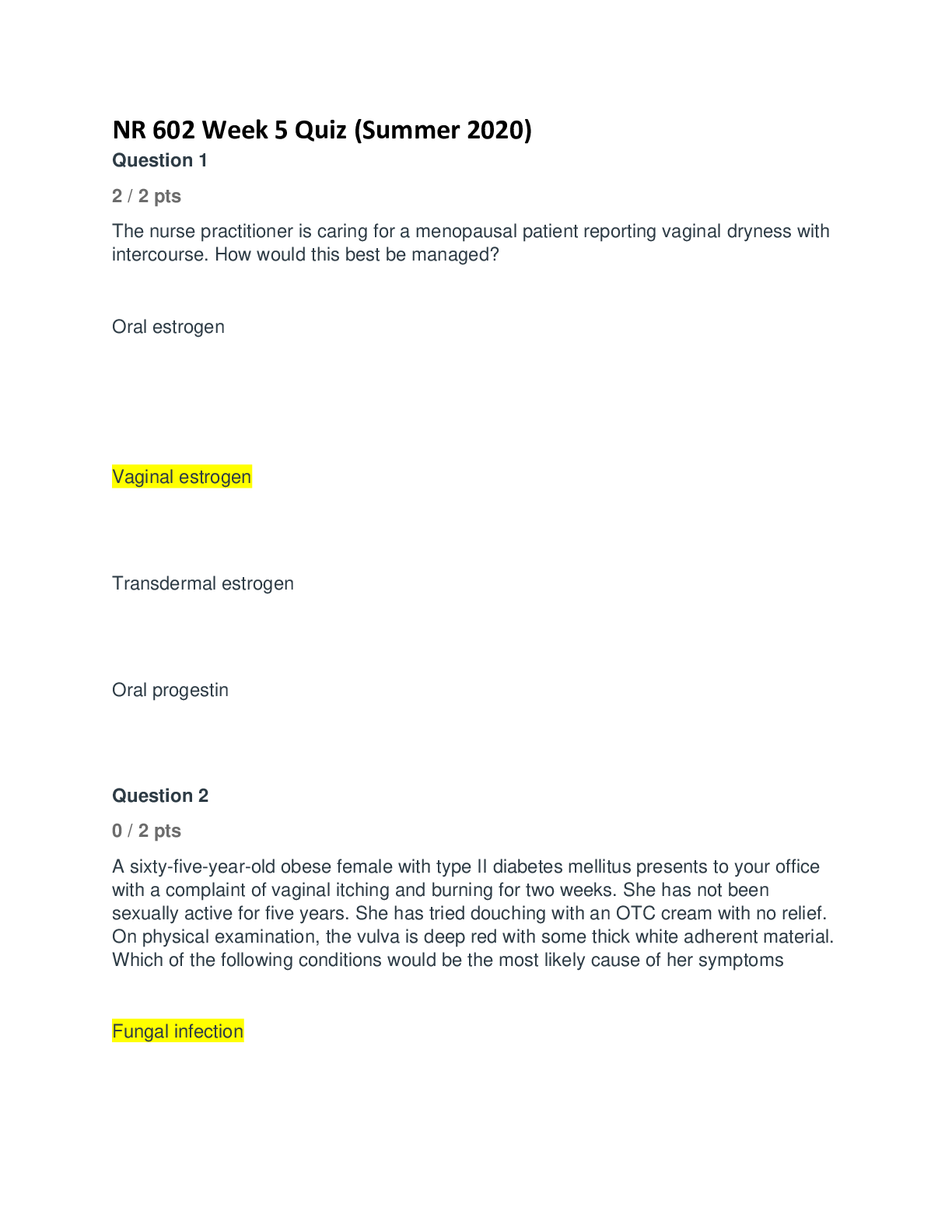
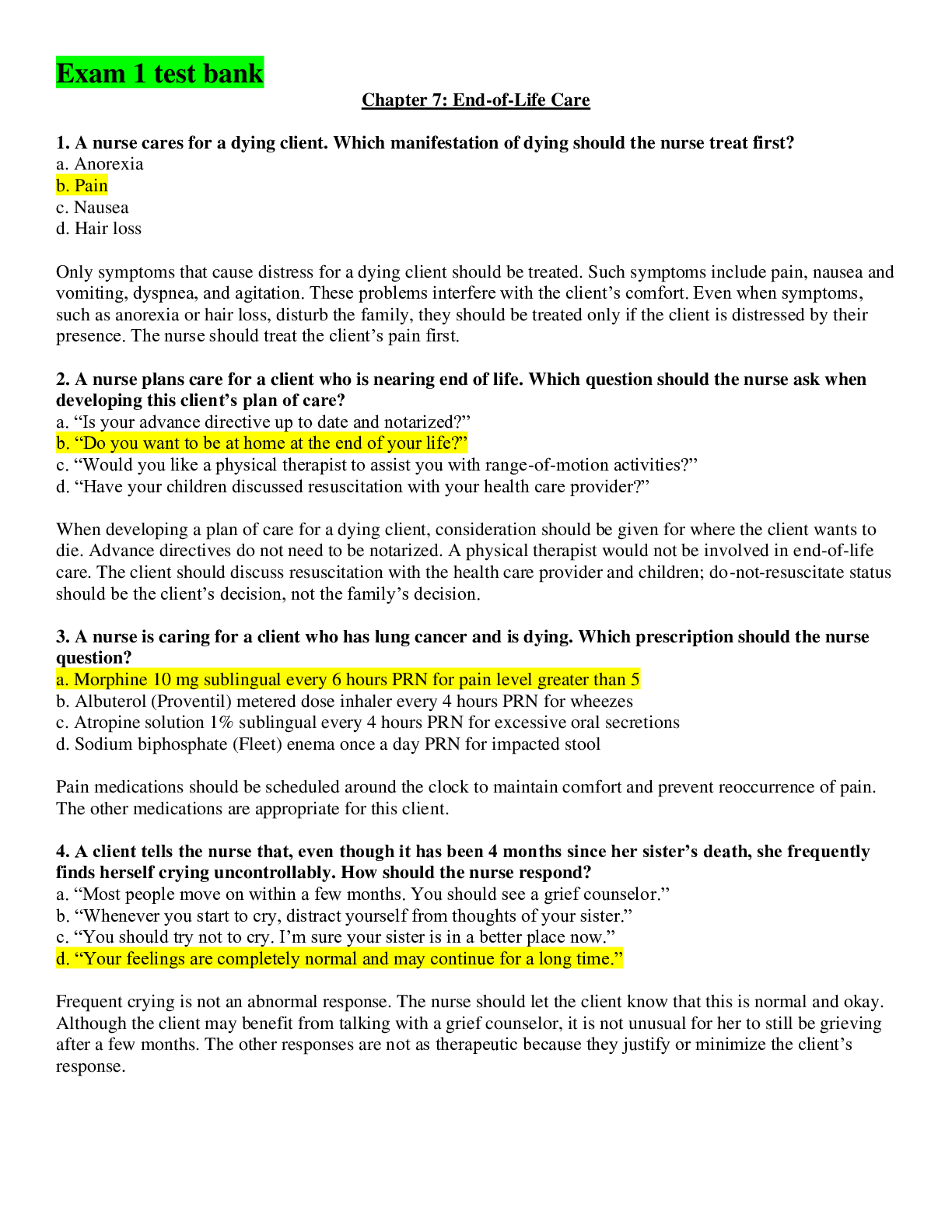

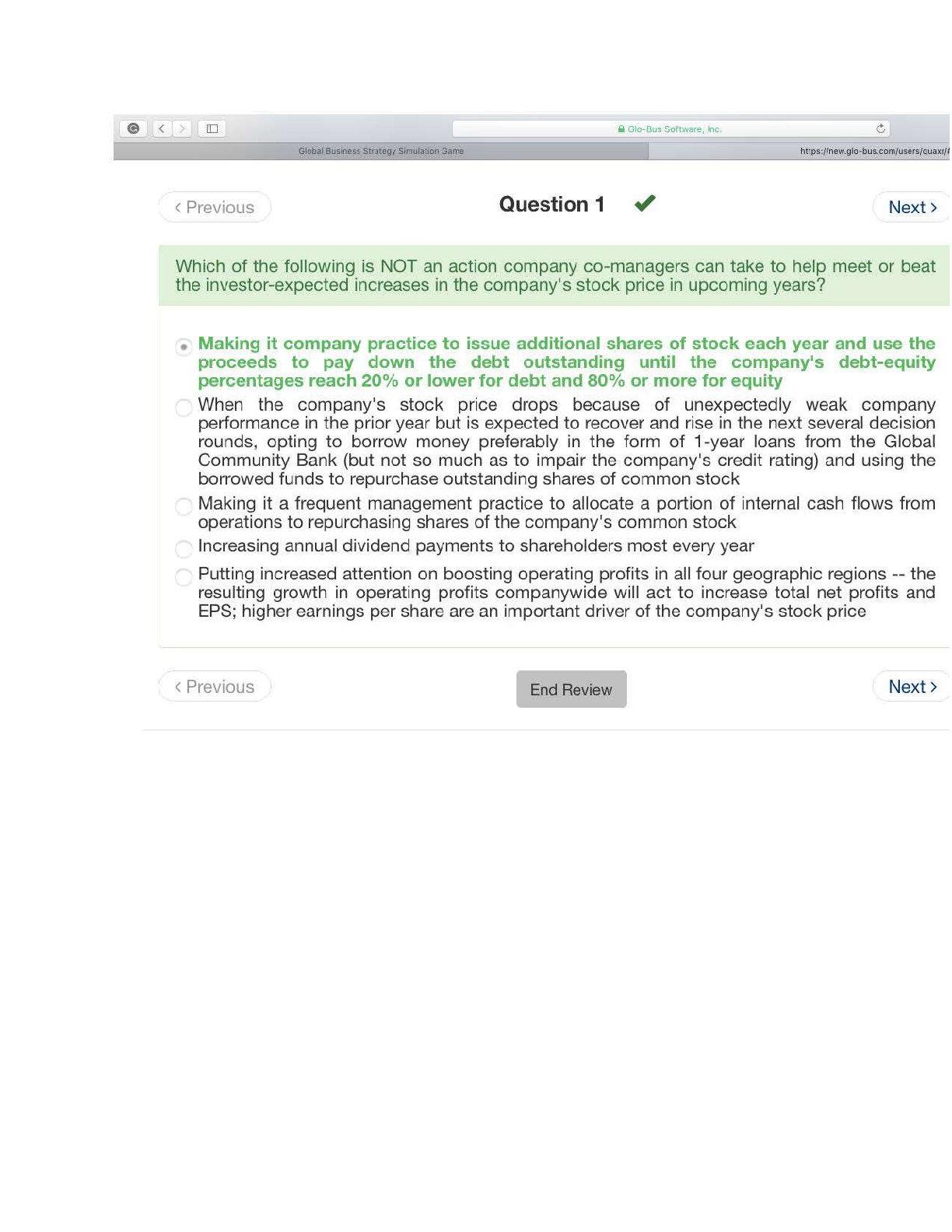
.png)
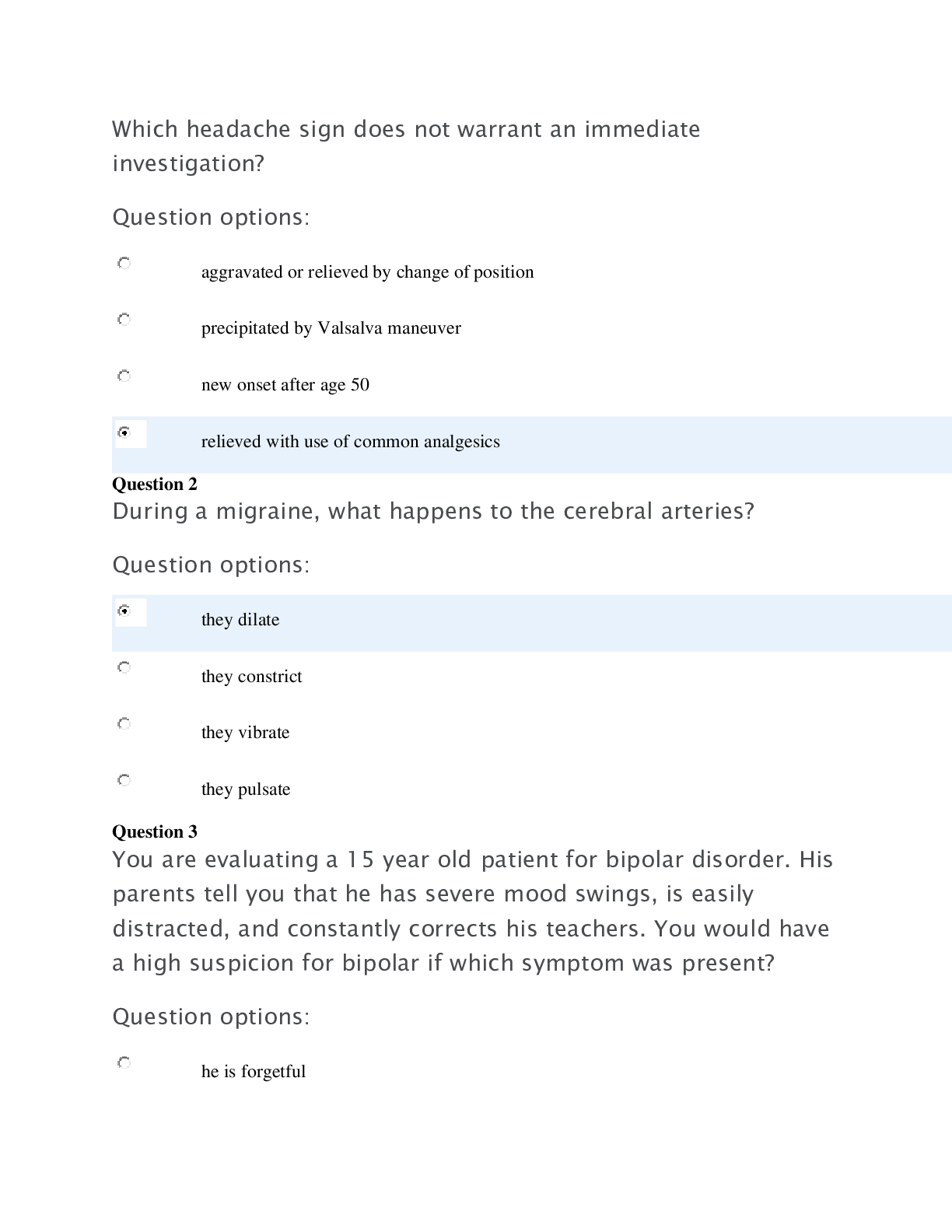

.png)
